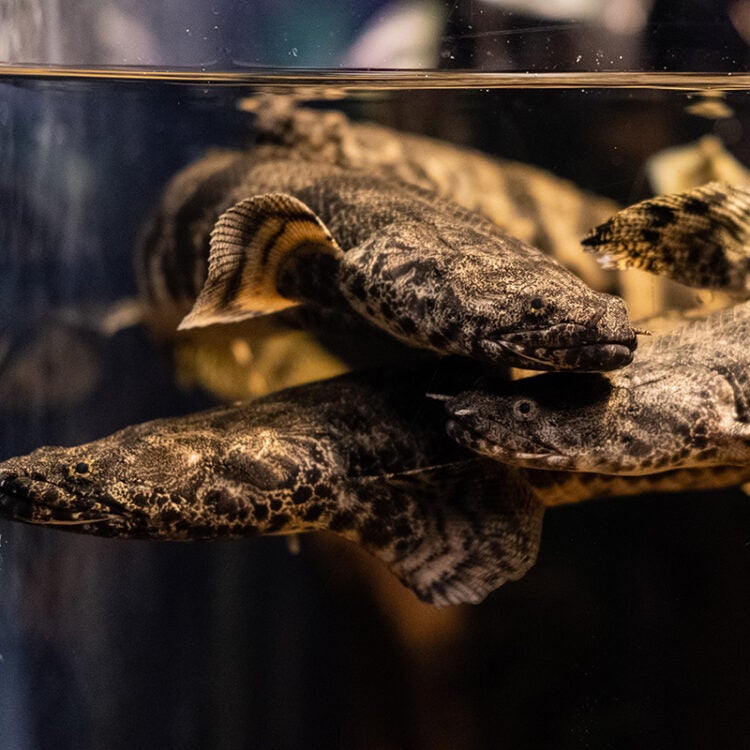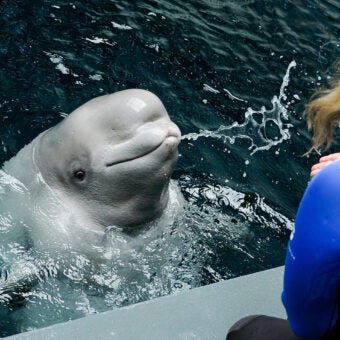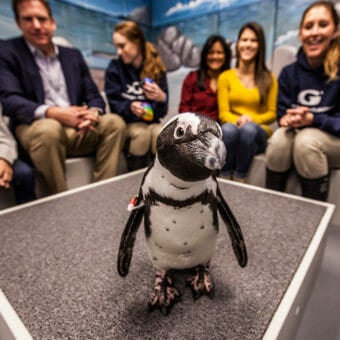-
Size
12 inches (30.5 cm) -
Diet
Snails, crustaceans, small fish -
Range
West Africa -
Habitat
Swamps, rivers, and marshes
Physical Characteristics
- Common length of 12 inches (30.5 cm); maximum length of 24.8 inches (63 cm).
- The lower jaw is longer than the upper jaw. The body is cylindrical in shape and covered with ganoid scales. Pectoral and anal fins are low on the body giving a leg-like appearance. A dorsal array of 7 to 16 dorsal fins begins behind the edge of the pectoral fins and ends with a fan-like caudal fin.
- Juveniles’ gills are external and become internal as they mature.
- Coloration is white or grey to a lighter brown with 3 to 4 irregularly-shaped vertical stripes along the length of the body.
- Light coloration between stripes resembles the shape of a horse saddle.
Animal Fun Fact
The saddled bichir gulps air from the surface in both oxygen-poor and oxygen-rich environments.
Diet / Feeding
- Carnivore; diet includes snails, crustaceans and small fish.
- A nocturnal hunter that locates prey using smell.
Range / Habitat
- Occurs in freshwater environments in west Africa including the Nile, Niger, Volta, Bandama, Comoé and Ouémé Rivers and the Chad basin.
- Inhabits swamps, rivers and marshes.
- Occasionally found in brackish water environments, particularly around mangroves.
Reproduction & Growth
- Spawning occurs during the rainy season and corresponds to changes in water temperature and chemistry.
- During spawning, the male will create a cup-shape around the female’s genitals with his caudal and anal fins to receive eggs from the female. Male will fertilize eggs and then scatter them among vegetation.
- Eggs hatch within 3 to 4 days of fertilization.
- Fry becomes free swimming around three days after hatching.
Conservation Status
- “Least Concern” on the IUCN Red List.
Additional Information
- The swim bladder is divided into two parts and can be used as a primitive lung.
- Gulps air from the surface in both oxygen-poor and oxygen-rich environments.
- Member of the Polypteridae family.







